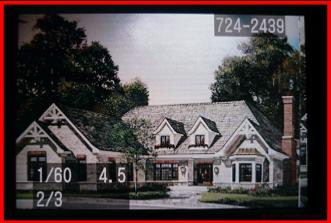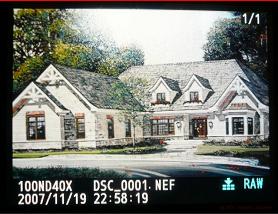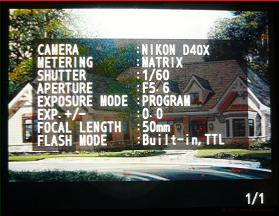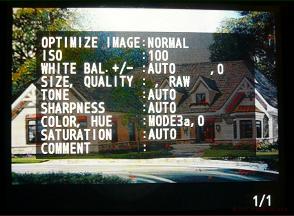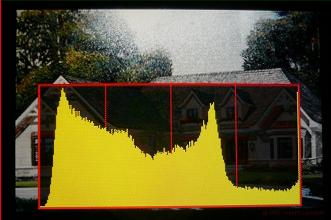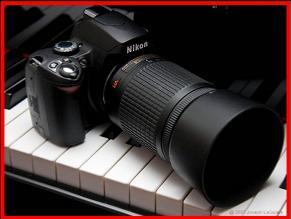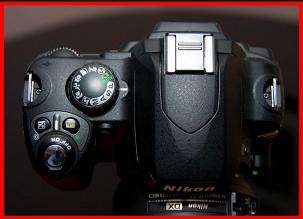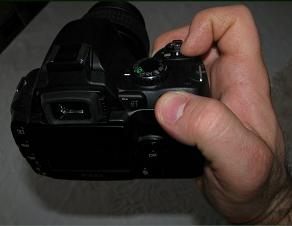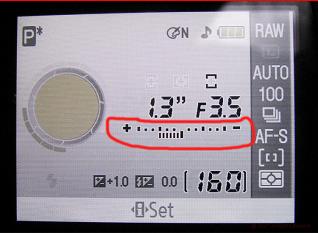"Declaring the glory of God
through photography of His created world"
copyright 2008 by Joseph LaQuiere

December 9, 2007
A recent look at three entry level DSLR cameras from Nikon, Olympus and Canon
The Entry Point for a DSLR
The DSLR market is constantly changing with new models being announced every few months. In order to find out where this entry point now stands and the best all around entry level DSLR I decided to take a look at 3 of the most poplar cameras.
Of course I am a Canon user and the Canon XTI and XT both have significant dominance in the market. I personally own both the older Canon XT and the current XTI These two cameras are then the standard by which the Nikon D40X and the Olympus E410 were judged.
I have separated these short reviews into three separate pages however these comments are really meant to be read as a whole and are relative to each other. I also am not going into much detail on the specifications or operational features as all of these cameras are reviewed extensively elseware on the web. I simply wish to give my comments and recommendations based on several weeks use with each camera.
LCD Information
I have now used both the Nikon D80 and D40X and it is annoying to me the way Nikon displays the shooting information on the LCD during playback or during quick review. On the Canon the most important information about the shot, Shutter Speed and Aperture, are available on the display without obscuring the image. I can make no sense of it, but Nikon does not have this information available until you use the up scroll key which will cycle through the various display information choices until you arrive at an overlay that, while it contains a lot of information, nearly completely obscures the underlying image. For me, this is a big problem because I routinely will review shots on the LCD for composition and exposure and I want to see the Shutter Speed and Aperture settings that the shot was taken at. With the Nikon I constantly have to cycle through the five different display modes so I can see the shooting info and the entire image.
One of the most significant advantages a Digital SLR offers to anyone, especially the student of photography, is to get immediate feedback on how the exposure parameters effect the shot. This information along with immediately being able to see the visual image is a very effective tool in improving ones skill. Along with the full size image, the display should be capable of displaying basic Shutter and Aperture information without requiring a lot of button presses or hiding the image. The Olympus E-410 info is similarly problematic not being able to display the most important basic information with the image full screen, but, again, useless information like the image size and file name.
No RGB Histogram
The Canon XTI and Olympus E410 also feature a histogram display which can be turned on for both Red Green and Blue channels and is visible along with a thumbnail of the image and more extensive shooting info. Nikon only offers a brightness histogram which again must be selected as an overlay that covers up over half the display
Here are three out of the FIVE Nikon information pages that may be displayed on the LCD by pushing the up navigation button.
I would much prefer basic shooting information on the left display instead of useless info like folder, date, time etc.
This is the simple but useful display on the Canon XTI
OK, just a few more small dislikes, I find that response to the control wheel (which is under the right thumb) to be slightly delayed. Meaning that when you make an adjustment there is a fraction of a second delay in your turn showing up on the screen. This leads to frequent over adjustment. I also find that the arraignment between the exposure compensation button and the adjustment wheel is a finger cramping setup. Since this is a frequently used adjustment I find this no small problem. In reference to the exposure compensation I also find it unnatural that Nikon has set up the exposure compensation indicator so that the plus side (lighter) is toward the left and darker is on the right, this is opposite of most cameras and I find it confusing.
The historgram display on the D40X The RGB Historgram on the XTI

What do I like about the D40X?
I have been somewhat negative about the D40X above but there is indeed a lot to like about it. First off it is a very comfortable camera to hold. The size and depth of the hand grip is just right making it well balanced. The next most significant plus for the camera is the bright and large view finder. The D40X view finder is noticeably brighter and larger than either the Canon XTI or particularly the Olympus E-410, which is dark narrow and tunnel like. The rear LCD is nice and bright and has the ability to magnify 25X in eight steps compared to Canon 10X however the Canon does this in fifteen steps.
The Lenses
Even though this review is not really about the lenses many people that will be purchasing these cameras will be doing so in a kit and I have been quite favorably impressed with the included lenses. I did not do any formal tests but in direct comparisons of the Nikon 18-55 and the Canon 18-55 the Nikon was sharper than the Canon. Now add the Nikon 55-200mm VR lens and the Nikon kit as tested is a very nice starting package.
After some very rudimentary testing I have concluded that the Nikon 18-55mm lens is marginally better than Cannon's although both lenses suffer from flimsy zoom guides and the plane of focus can be altered easily by alignment of the lens barrel.
The other thing I noticed is that the Nikon seems more accurate on focus than the Canon, even though the Canon has nine focus points VS Nikon's three. The Nikon has a tighter tolerance for what it determines as "in focus" than does the Canon.
Image Quality
If the decision on these three cameras comes down to image quality alone it would be a hard choice indeed. The gap in absolute image quality, leadership which once belonged to Canon, has narrowed to practically nothing. All three of these cameras are capable of producing equally as good of pictures as the other. There are a few nits between them but it would be hard to make an unquestioned choice for winner. In the galleries that I have posted it may be tempting to come to a conclusion but bear in mind that these are JPGs reduced for the web. In over 4 weeks with these cameras it truly is a mixed bag when it comes to IQ with the biggest variable being the human interface with each camera rather than the camera's capabilities.
Noise and ISO
Nikon's Achilles heal in the past has been ISO performance at high settings 400 and greater. Canon has from the beginning been the leader in low noise sensors but the gap has become very narrow indeed. I would still say that Canon's sensor is more noise free at 400 ISO and greater but the difference is no longer significant and perhaps even debatable between Canon and Nikon. Olympus on the other hand is not as close with the E-410 having noticeably noisier images than either camera at ISO 400 and above.
Nikon D40X
Having dropped the D70 and the D50 the D40X is Nikon's current entry point into the DSLR market. Nikon does still offer the D40 without the "X" moniker as an even lower price option but just as canon has done in keeping their XT, Nikon has retained the older D40 for the part of the market that is willing to take older technology in lieu of price. But for all intents, both for Nikon and Canon, the D40X and the XTI are the latest in their respective companies entry level offering. Both cameras can be had in a kit with two zoom lenses (normal and telephoto) for about $950us.
The configuration that I tested the Nikon with was the kit form that includes the 18-55mm and the 55-200mm VR lens. The D40X in this package represents somewhat of an advantage in price over the Canon because of the 55-200mm VR lens. VR stands for "Vibration Reduction" which is Nikon's version of Cannon's IS (image stabilized) lenses. For those unfamiliar with what this does, it is a mechanical system within the lens that will reduce camera shake stabilizing the image for shaper pictures under lower shutter speeds. One would have to add about $200 to the Canon package to come up with a similar IS telephoto lens for the canon XTI setup. So of the bat, the Nikon starts with what would appear to be a significant advantage, and so it is, but how does the camera body stack up in use, image quality and over all performance? The short of it is, very well!
Let's get all the negative out of the way first
Forget Upgrading To The D40X From Film Based Nikon Cameras Or If You Have Older Nikon Lenses
Unfortunately I think that Nikon has repeated the mistake that Canon made in 2003 when it released it's feature crippled but immensely popular and price breaking camera, the first Digital Rebel the 300D. Canon however had the advantage of being the first to offer a DSLR camera below $1000 and even though it was software crippled it was compatible with all Canon's AF lenses. Nikon has done something similar with the D40X crippling it by not including a body based focusing motor. This makes the D40X only compatible with newer Nikon lenses that feature lens based focusing motors (AF-S & AF-I). In the past Nikon lenses used a system that had a focus motor built into the camera body instead of the lens. There are still about 24 or so current Nikon lens which use the old system and will not auto focus on the D40X body. This significantly impacts those that still are with Nikon film based AF systems being able to take an inexpensive upgrade path into a Nikon DSLR. To matain complete lens compattibly one must step up in the current Nikon lineup to the D80 $800 (body only).
No Exposure Bracketing or Depth of Field Preview.
Perhaps we can forgive Nikon for not including compatibility with all of it's AF lenses because they had to cut costs somewhere in the body, but why then leave off a software feature like Exposure Bracketing or Depth of Field Preview? Are these features likely to be very important to many purchasers of this camera? Perhaps not, but why when I can find bracketing available on many pocket cameras in the $200-$400 range, should these features be unavailable on any DSLR. To cripple the camera and make these simple features unavailable to the budding photographer that whishes to be more creative is simply stupid! In fairness Cannon has done a similar thing with the XTI in not having an "Auto ISO" mode, which is now very common in most cameras. But at least this is not leaving off a standard feature that has been seen on nearly every SLR for the last 20 years.
Top view of the Nikon D40X and with the 55-200mm VR lens
______________________________________________________
"Dummy" Mode
Seeing that many of these cameras will be used by and purchased for the causal photographer I decided to test the so called "dummy" modes on each camera . If not for the main shooter but for the wife, husband, child etc. that may wish to just pick the camera up and turn to the "Green" and shoot. In this mode all the camera functions including when to fire the flash are determined by the camera. Each camera differs slightly in what limited parameters it does allow you to adjust, but the Nikon comes in about the middle of the road. Canon givs you practically no adjustment, while in the "Dummy", mode and Olympus allows the most options to be changed. Nikon allows you to adjust the File Type (raw/jpg) and Size, the ISO setting from "Auto" to 1600, Shooting Mode, Focus Mode, AF Area and the flash ON, OFF or Red Eye.
In my test I simply took a series of photos under varying conditions with each of the three cameras all at their default settings. All images were just as the camera took them in JPG format. In my opinion this test resulted in the Nikon D40X yielding the best overall images. Overall better metering, flash, exposure, ISO and white balance decisions being made.
Nikon D40X, ISO 1600, 100% Crop
Canon XTI, ISO 1600, 100% Crop
Olympus E-410, ISO 1600, 100% Crop
Conclusion
So no what is my personal conclusion. The Nikon is a nice camera to use and takes excellent pictures. As configured in the kit form with the two lenses it represents a very good value when you consider the VR lens. Most of my complaints about the camera are about small operational things. All in all this is a good camera and will provide true DSLR performance and great images. I would like to have seen Nikon make it compatible with all their AF lenses and I think they made an annoying mistake to not put in Bracketing and Depth of Field Preview. For me and my shooting and photography style these issues are very significant and would prevent me personally from buying the camera. . With all things considered for a first time purchaser or someone that has no usable Nikon lenses, with the D40X, I would prefer and recommend the Canon XTI over the D40X but the reasons are small and mostly personal preference. In this comparison with all three cameras in mind I find the Nikon and Canon to be most closely matched with Olympus below them in nearly every aspect. All of these cameras however offer a very fine level of performance and have unique strengths of their own. So we could debate about wether Nikon or Canon are on top but it is one of the two and if you were a friend of mine I would say buy the Canon but I would not argue too hard.
Please see the review of the Canon XT and the Olympus E-410
Finger cramping
exposure compensation
Exposure compensation
indicator reverse of normal
Nikon D40X 18-55mm, 1/320, f/9, ISO 200

